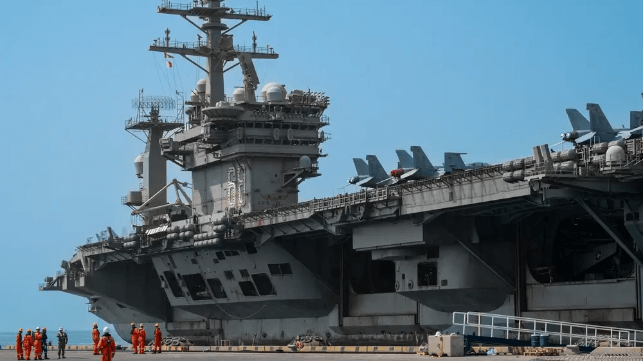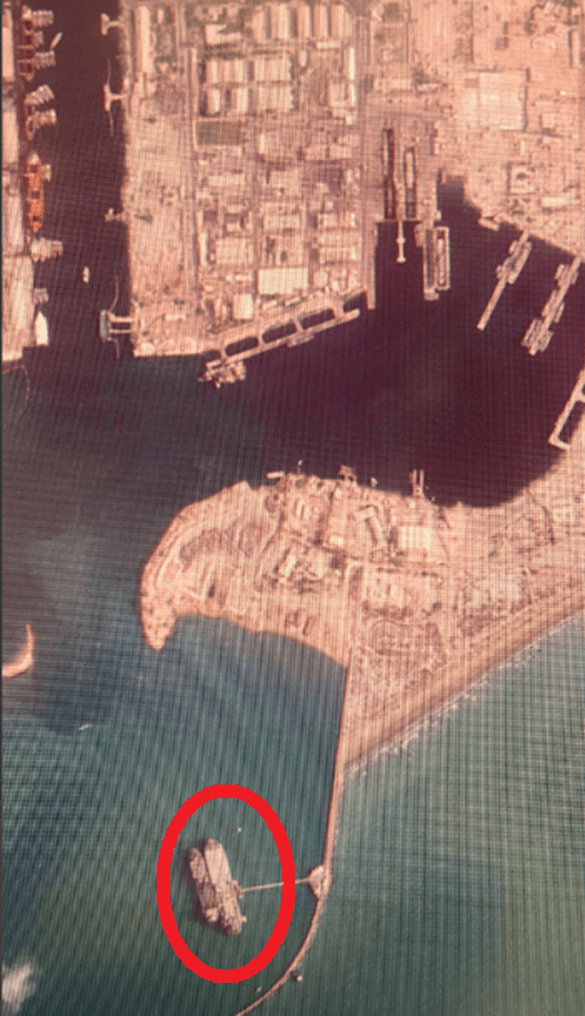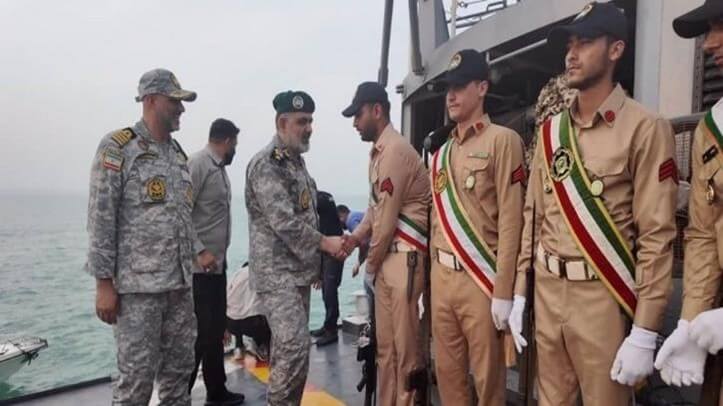Gulf Visit by USS Nimitz Prompts Iranian Deployment

The USS Nimitz (CVN-68), flagship of Carrier Strike Group (CSG) 11 has passed back out through the Straits of Hormuz, having called in Bahrain on August 9 to make the first visit to the Naval Support Facility and headquarters of Fifth Fleet since 2020.
The CSG escort group is found from Destroyer Squadron 9, currently comprising the Arleigh Burke-class destroyers USS Gridley (DDG-101), USS Wayne E. Meyer (DDG-108), USS Lenah Sutcliffe Higbee (DDG-123).
The CSG is now operating in the Northern Arabian Sea. The US deployment is routine, and in the past the Iranian press have given bombastic coverage to US carrier movements in the Gulf. But the movement of the CSG has not rated any mention in the Iranian media on this occasion.
Instead, and probably prompted by the CSG’s activity both in the Gulf and now off Iran’s southern coast, Bandar Abbas Naval Harbor is currently almost empty of Iranian Navy (Nedaja) ships, suggesting that the Nedaja Southern Fleet deployed to track the movements of the CSG through the Straits. As of August 19, there were no frigates tied up back in Bandar Abbas. Only one Hengam-class landing ship was in port, suggesting others were out performing their replenishment at sea role. The only major ship still in port is the forward base ship IRINS Makran (K441) on its usual pier in the outer harbor. Moored alongside is a 187-meter replenishment ship with helicopter deck, which has not previously been seen in Bandar Abbas.

An empty Bandar Abbas Naval Harbor on August 19, save for IRINS Makran (K441) on its normal pier in the outer harbor, with another but unidentified replenishment ship alongside (Sentinel-2/CJRC)
The reticence of the Iranians regarding the CSG is probably attributable to the high degree of nervousness in Iran that Israeli and American air attacks could resume. Major General Yahya Rahim Safavi, an IRGC senior adviser to Iran's Supreme Leader Ayatollah Ali Khamenei, warned on August 17 that the war with Israel could resume at any point, noting that “We are not in a ceasefire, we are at war. No ceasefire protocol, regulation or agreement has been written between us and the US or Israel,” he told Iranian news agency IRNA, stressing the need to be prepared for a recurrence of attacks and “the worst scenario”.
His warning was backed up by Iran's Foreign Minister Abbas Araghchi and by parliamentarian Amir Hayat-Moqaddam, both of whom threatened that Iran would retaliate if attacked. Hayat-Moqaddam claimed that “we can move our ships to within 2,000 kilometers of the US, and from there target Washington, New York, and other cities. Right now, all European countries are within our range.”
The principal such ship to deliver such a threat, the IRGC Navy’s angle-decked drone and missile carrier Shahid Bagheri (C110-4), remains anchored off Bandar Abbas at 27.05259N 56.14499E as it has been for many weeks, with its sister ship Shahid Madhavi (C110-3) close by at 27.090408N 56.179668E.
Weeks after Israeli and American attacks, tensions remain extremely high in Iran. Responding to the humiliations and indications of weakness exposed in the attacks, hardliners are urging the Supreme Leader not to compromise, and to redouble Iran’s program of regional expansionism and nuclear development. Reformists, represented by the President Masoud Pezeshkian, are urging a resumption of negotiations with the United States and the E3 nations, and a recognition that previous policies have dangerously alienated popular opinion in Iran, jeopardizing the stability of the Islamic regime.
Hardliners and reformists have always fought each other within Iran’s ruling elite, but the antagonism between the two factions is now at unprecedented levels. A similar polarization of views is occurring amongst the wider population, with secular patriots set against religious patriots. At stake is stability in the country, which if upset would cause massive disruption to commerce - and to the security on which the maritime trade depends right across the Gulf.

Boosting morale: Nedaja commander Rear Admiral Shahram Irani visits ships at sea in the Strait of Hormuz, July 27 (Tasnim)
